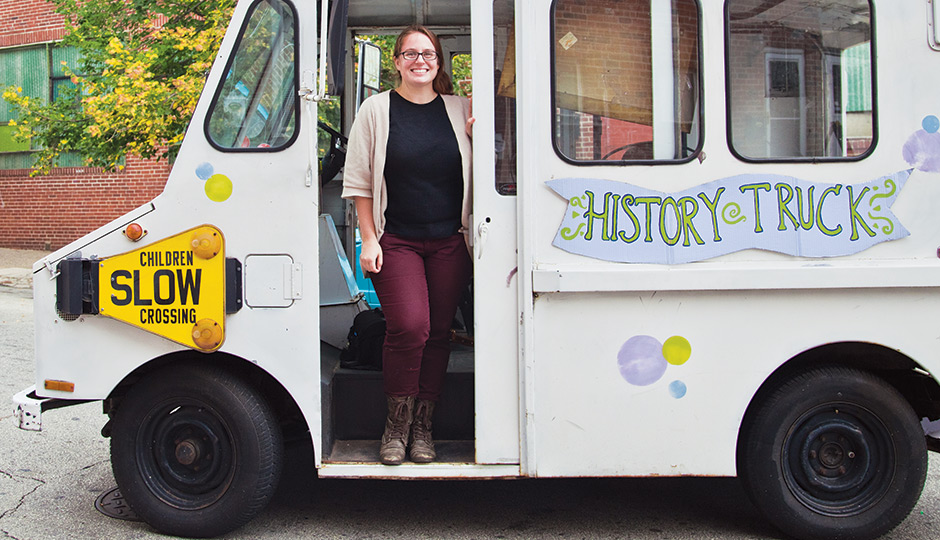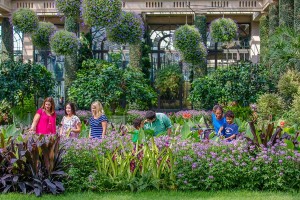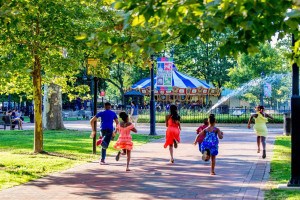A Museum on Wheels

Photograph by Laura Kicey
Philadelphia is a city rich with history. It has also been deemed “the city of neighborhoods.” But when’s the last time you actually had a conversation with somebody about the history of those neighborhoods? That’s where Erin Bernard’s brand-new Philadelphia Public History Truck comes in.
Bernard first told us about her truck in an interview on Phillymag.com last August, when her dream was still just an old box-mail-truck-turned-water-ice-truck in need of a purpose. But this month, she reveals her inaugural mobile exhibit, which uses art, artifacts and oral history to tell the story of the East Kensington neighborhood.
Instead of following the normal curatorial museum model wherein a bunch of academics decide what will be part of an exhibit, Bernard asked neighborhood residents what the exhibit should look like and what stories it should tell — and then got their help to execute it.
She threw a block party, volunteered weekly in a Kensington soup kitchen, and went door-to-door to get people involved and to hear their perspectives. “Hundreds of people have touched this exhibit in some way,” says the 28-year-old graduate student in public history at Temple. “We let their thoughts drive what happened.”
The truck project was Bernard’s first pitch to her academic adviser as a thesis project. “I’m hoping to study how pop-up museums can help historians better engage communities,” she says. “This is an active way of finding out if they do.” Temple and the Historical Society of Pennsylvania are both sponsors.
In April, Bernard presented a stationary version of the exhibit at Kensington’s Little Berlin gallery. The next stage is the mobile version. She’ll drive the truck from neighborhood to neighborhood, tweeting her next location along the way and bringing the stories of East Kensington to residents all over the city. “We’ll pull up and open up the back, and people will climb in one at a time,” she envisions. “And hopefully when they come out, they’ll better understand how we all connect.”


